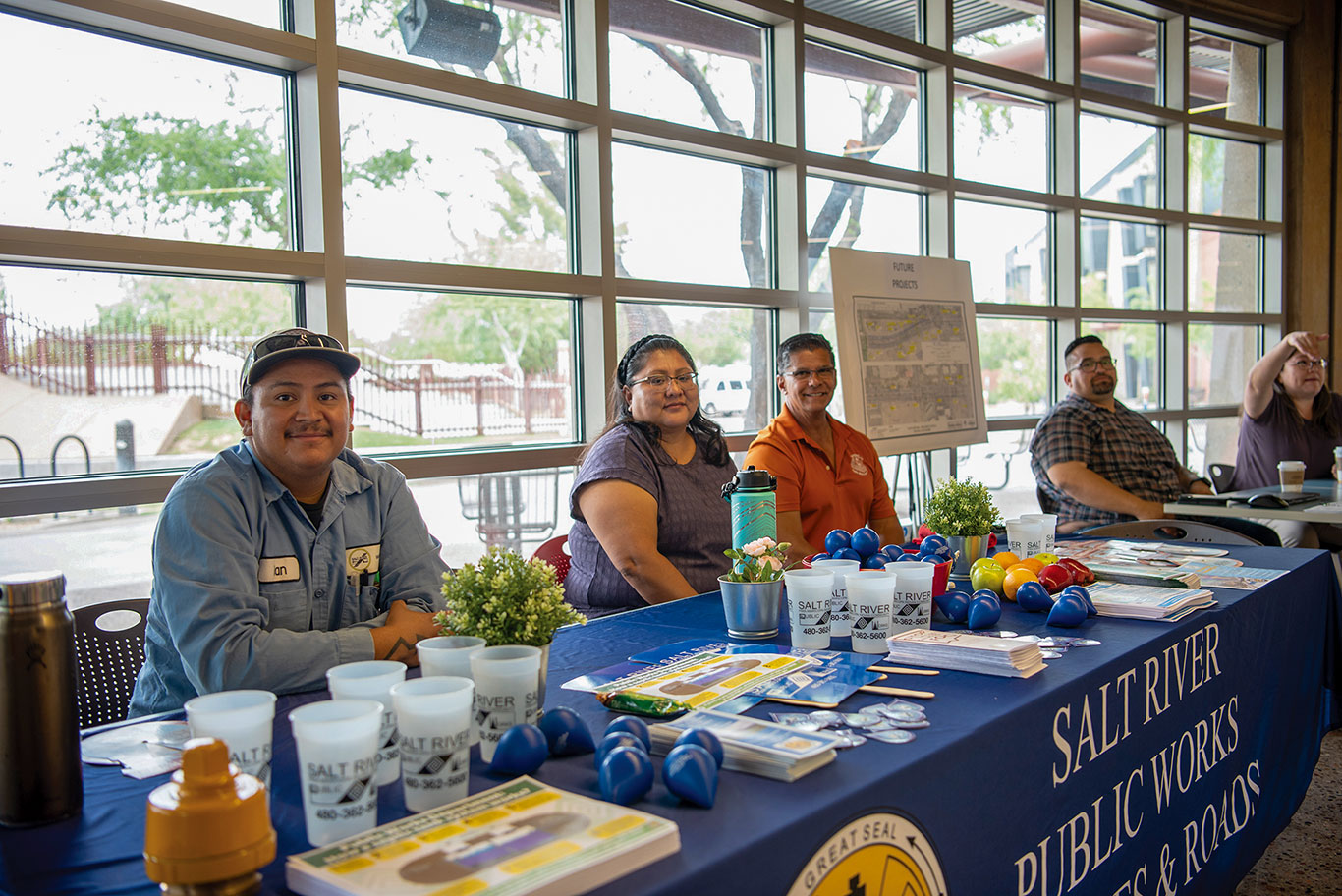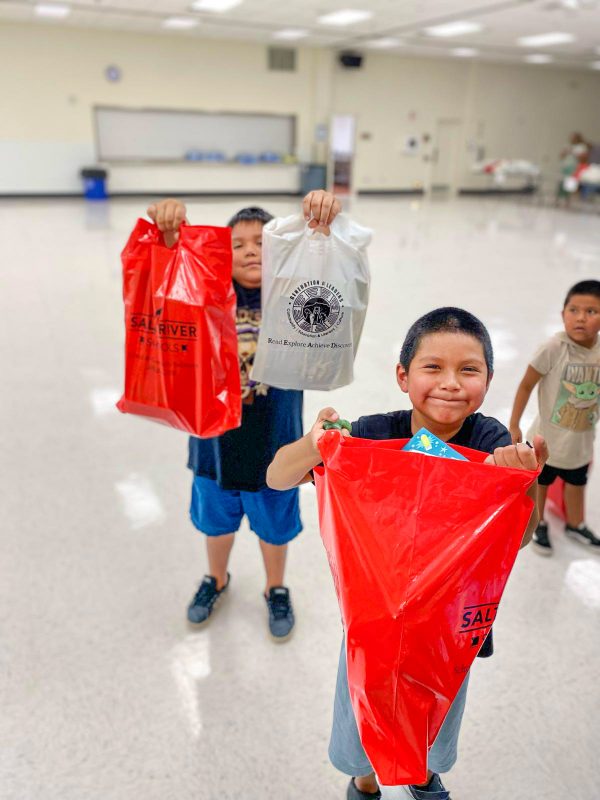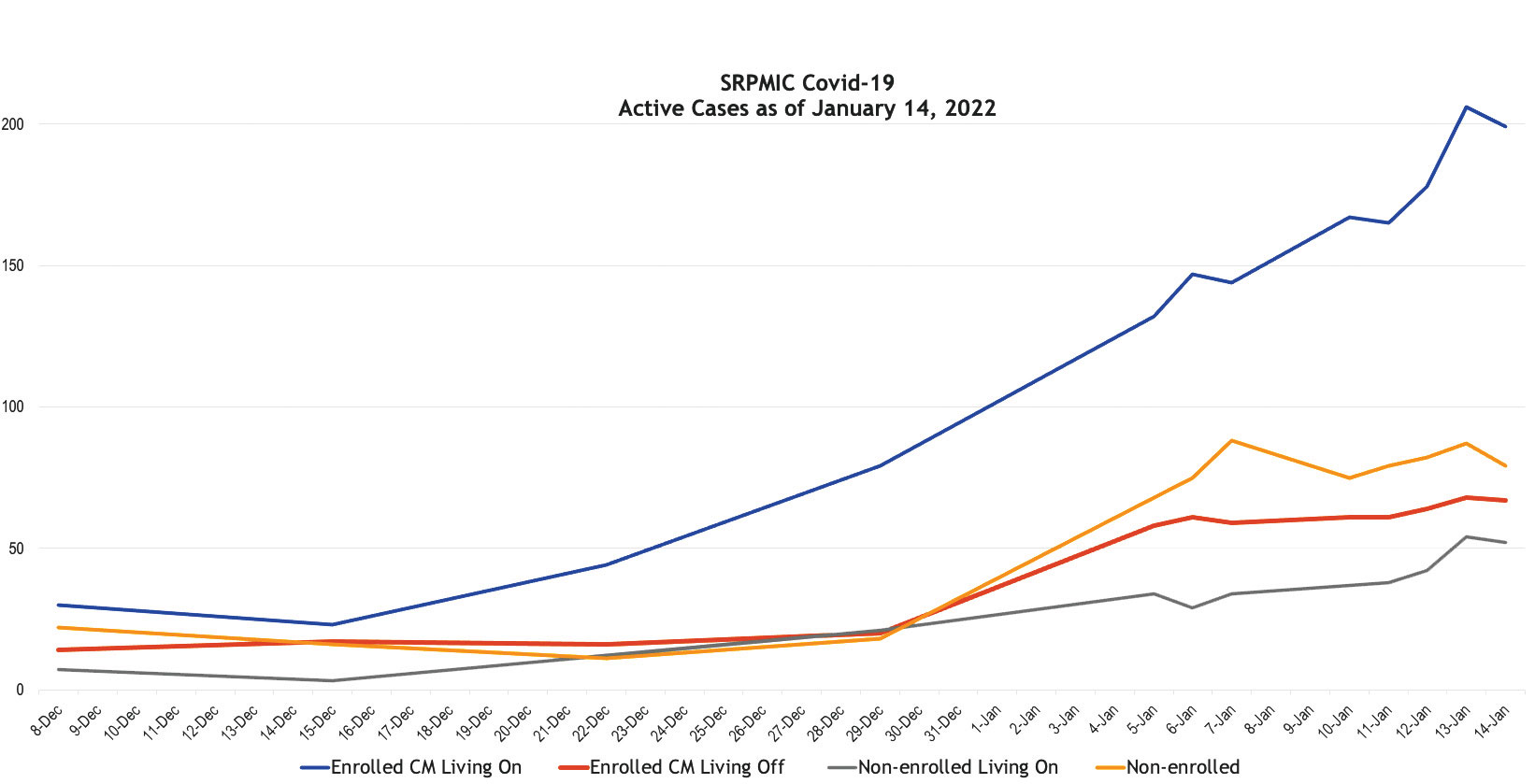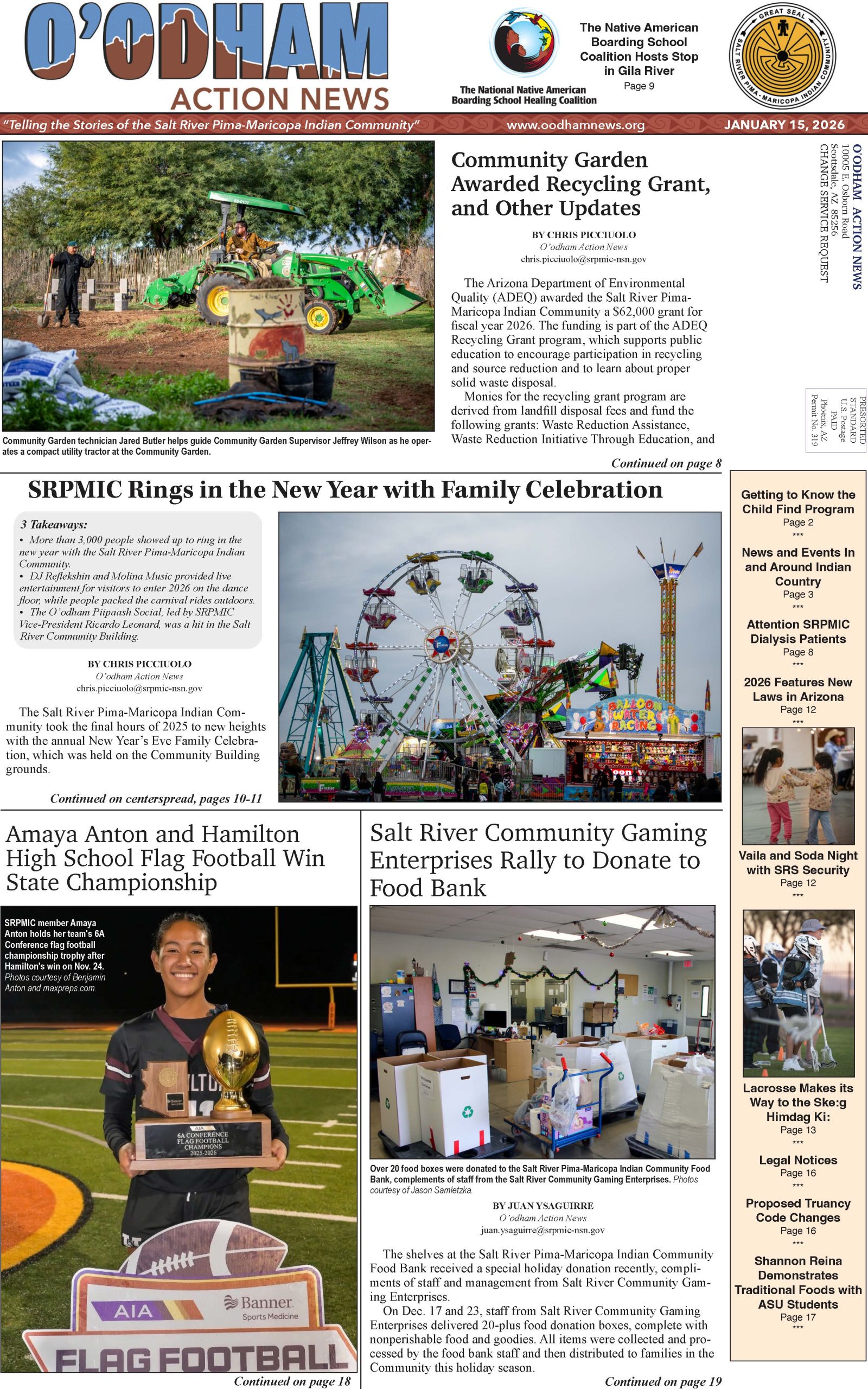VIEWS: 1971
June 10, 2024Where Would We Be Without Public Works?
By Kari Haahr
The Public Works Department is tasked with maintaining the infrastructure of the Salt River Pima-Maricopa Indian Community—meaning the roads, parks, buildings and facilities, along with everything that goes into making them operate smoothly and safely, like water, power and waste collection. Because Public Works covers such a broad array of services, it’s easy to take for granted. During National Public Works Week, which took place May 19-25, Community members and employees were invited to learn more about the many services provided by the Public Works Department to keep the Community safe and clean.
The event kicked off on Monday, May 20, at the Round House Café. Staff from the many divisions within Public Works set up informational displays, sharing insights and details with visitors about how each team serves the Community. The exhibits included irrigation systems, which showed programming set to the specific needs of plants used in landscapes throughout the Community; a diagram that showed how an air conditioning unit operates and important factors for maintaining it, such as changing the filter; how electrical systems are safely maintained so that power outages and surges don’t cause damage; and more. Other Public Works divisions that presented information at the event included the recycling program, transportation projects, future projects, bulk trash and custodial services.
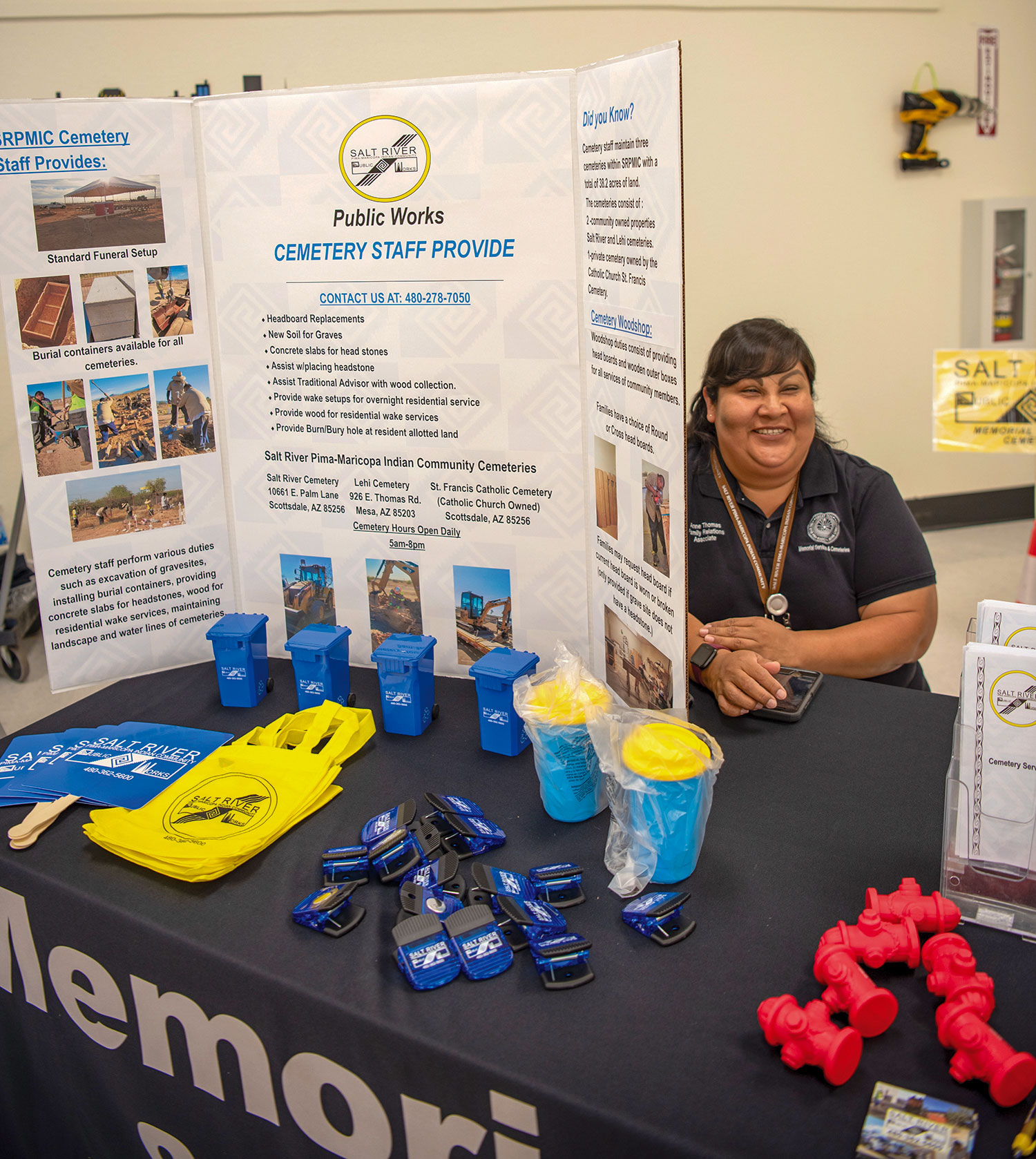
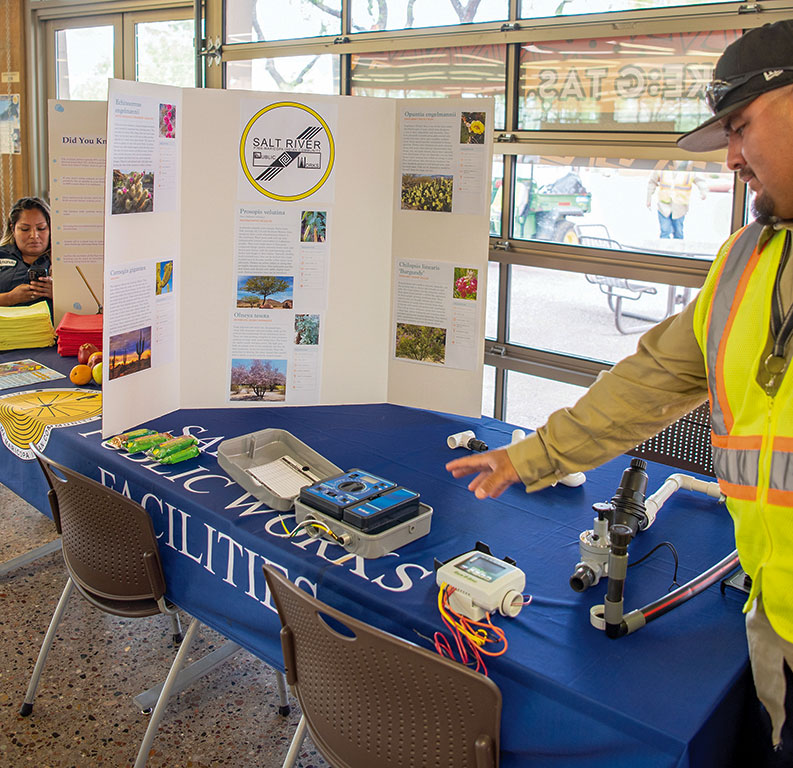
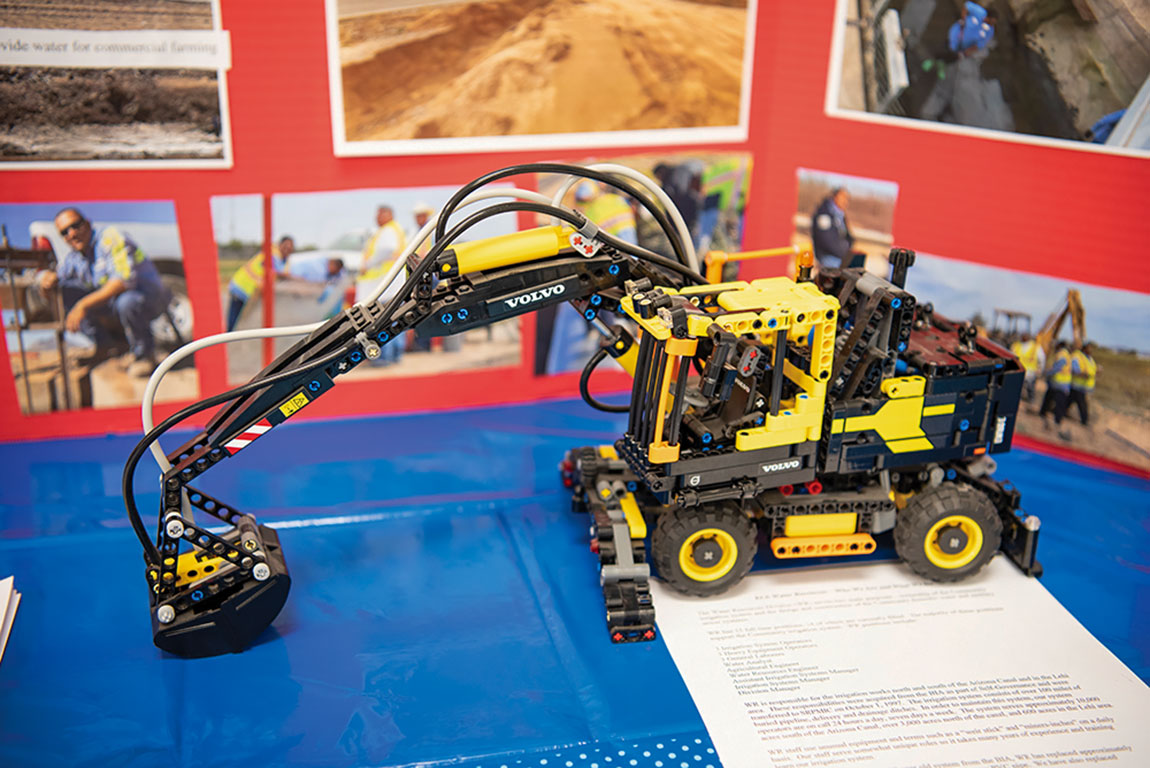
The following day, Public Works held their second Community Day event at the Salt River Community Building. There, guests and visitors could take in the full array of Public Works services, beyond the internal functioning of the government buildings to the services provided to Community members through facilities, cemeteries and memorial services, parks, waste collection, irrigation, wastewater and other water resources. As informative as it was, there were also fun activities for children and families, including a virtual reality headset where the user got a glimpse of what the day-to-day for Public Works looks like, such as Roads Crews doing landscape work or riding along on one of the grading tractors, and a raffle contest, with winners announced after dinner was served.
Some of the ways guests learned to help maintain systems in their home and at work were as simple as knowing what is and isn’t recyclable and what should and shouldn’t go down the drain. For example, fats, oils and greases should never go down the sink drain, especially if your home is on a septic tank. Septic tanks in particular can be a challenge for Public Works. A healthy septic system should be able to go five years without needing to be pumped, but flushing items like wipes, diapers, paper towels and other solid items (even if the packaging says it is flushable or septic safe) will lead to backups and more frequent interventions needed.
The theme for this year, as announced by the American Public Works Association (APWA), is “Advancing Quality of Life for All.” This is an accurate description of the role Public Works plays throughout Salt River and Lehi. All of this was made possible by Public Works, and it is a lot of work, but it’s made manageable through maintenance. Together, we can help raise quality of life for everyone in the Community by following their lead.

